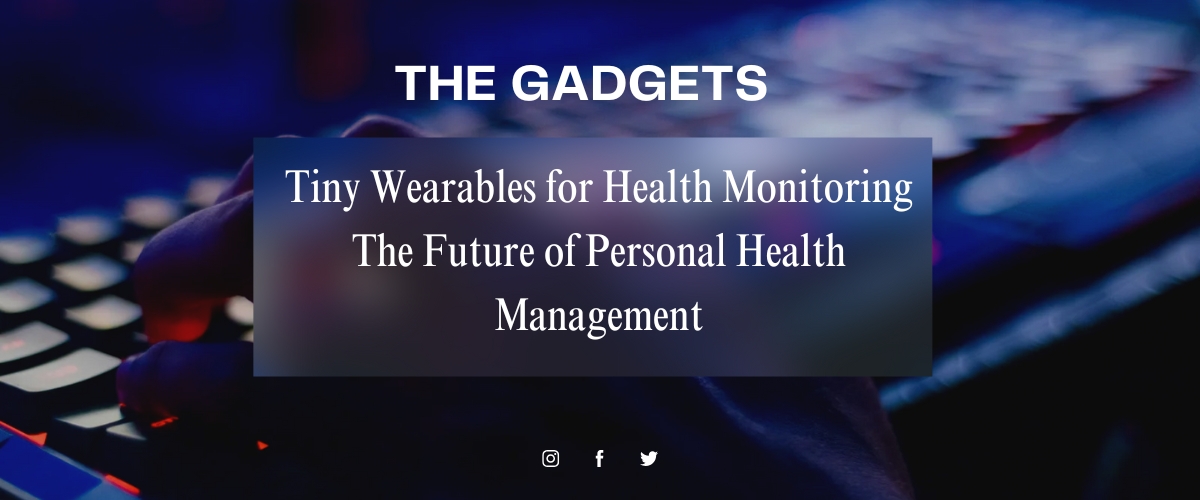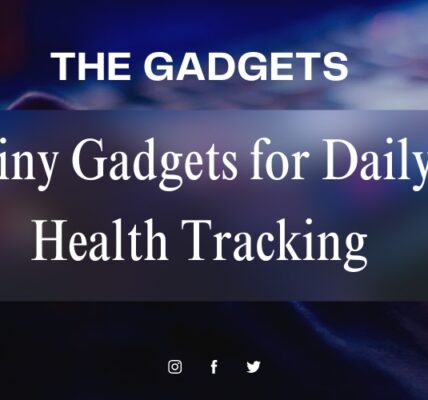In recent years, the rise of technology has brought about significant changes in various industries, and healthcare is no exception. Among these innovations, tiny wearables have emerged as powerful tools for health monitoring. These compact devices are designed to provide real-time insights into our health, making it easier than ever to track vital signs, manage chronic conditions, and promote overall well-being.
What Are Tiny Wearables?
Tiny wearables, often referred to as wearable technology, are small electronic devices that can be comfortably worn on the body. They come in various forms, including smartwatches, fitness bands, and even adhesive patches. These devices are equipped with sensors that monitor various health metrics such as heart rate, blood pressure, sleep patterns, and physical activity levels. The data collected is often synchronized with mobile applications, allowing users to easily access their health information.
Key Benefits of Tiny Wearables
- Continuous Monitoring: Unlike traditional health monitoring methods, tiny wearables provide continuous and real-time data. This allows users to keep track of their health throughout the day, leading to early detection of potential health issues.
- Convenience: The compact size of these devices makes them easy to wear and integrate into daily life. Whether you’re at work, exercising, or sleeping, you can effortlessly monitor your health without any interruptions.
- Personalized Health Insights: Many tiny wearables use advanced algorithms to analyze collected data and provide personalized health recommendations. This tailored approach empowers users to make informed decisions about their health.
- Encouragement for Active Lifestyles: Many wearables include fitness tracking features that motivate users to stay active. By setting goals and tracking progress, individuals are more likely to adopt healthier habits.
- Telemedicine Integration: Tiny wearables can easily connect with telemedicine platforms, enabling healthcare professionals to monitor patients remotely. This is particularly beneficial for managing chronic conditions or post-operative care.
Popular Tiny Wearables on the Market
- Fitbit Charge 5: This fitness tracker offers features like heart rate monitoring, sleep tracking, and stress management tools. Its sleek design and long battery life make it a popular choice among health-conscious individuals.
- Apple Watch Series 9: Beyond its stylish appearance, the Apple Watch includes advanced health monitoring capabilities, such as ECG, blood oxygen monitoring, and fall detection. It seamlessly integrates with other Apple devices, enhancing the user experience.
- Oura Ring: A unique take on wearables, the Oura Ring is a smart ring that tracks sleep, readiness, and activity levels. Its discreet design appeals to those who prefer not to wear bulky devices.
- Whoop Strap 4.0: This subscription-based fitness tracker focuses on recovery, sleep, and strain. It provides in-depth analytics to help users optimize their workouts and recovery routines.
Challenges and Considerations
While tiny wearables offer numerous benefits, they also come with some challenges. Privacy concerns regarding data security are significant, as users must trust companies to protect their health information. Additionally, the accuracy of some wearables can vary, and they should not be used as a substitute for professional medical advice.
The Future of Tiny Wearables in Healthcare
As technology continues to evolve, the potential for tiny wearables in health monitoring is immense. Innovations such as improved sensors, artificial intelligence, and machine learning are paving the way for even more accurate and personalized health insights. Furthermore, as public awareness of health and wellness grows, the demand for accessible health monitoring solutions will only increase.
In conclusion, tiny wearables are transforming the way we monitor and manage our health. Their convenience, continuous monitoring capabilities, and potential for personalized insights make them invaluable tools for anyone looking to improve their well-being. As we move forward, these devices are likely to play an even more significant role in the future of healthcare.

